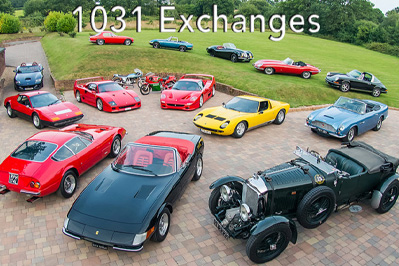Cars as an Investment (on paper)
The Scottsdale and Amelia auctions have piqued your interest in adding to your car collection, but what if you need to sell one of your current cars to make the new acquisition possible? The good news is that unlike many investments, classic cars continue to appreciate in value. The bad news is that tax rates might diminish or eliminate the benefit of selling any of your current collection. Net capital gains from selling collectibles are taxed at a maximum 28% rate federally. However, vintage/classic/exotic cars which are owned* as investments or for use in a trade or business are eligible for tax deferral through a 1031 exchange. Cars held for personal use and enjoyment are not eligible for 1031 exchange tax deferral.
Like-Kind Properties
A tax-deferred exchange under Section 1031 of the Internal Revenue Code allows you to sell investment properties and acquire “like-kind” properties while deferring federal, and possibly state, capital gains taxes. 1031 exchanges of vehicles are almost identical to 1031 exchanges of any other type of capital asset, including real estate. However, one important difference is that classic/exotic cars are only “like-kind” to other cars, and are not “like-kind” to aircraft, vessels or other personal property. As with all deferred exchanges, an independent party, like Exchange Services, LLC, must act as a qualified intermediary to hold your funds between the sale of your relinquished car and the purchase of your replacement car.
In a recent transaction, Premier Financial Services (as the lessor under a direct finance lease) was instrumental in assisting our mutual client in dramatically increasing the value of his collection with the sale of three vintage cars and purchase of one significantly higher valued vintage car. PFS went above and beyond in working with us on each sale, coordinating with a foreign auction house in preparation for a purchase (which ultimately was not consummated) and a traditional purchase, also financed by PFS.
The Benefit
In a 1031 exchange example, if a client sold a vintage car for $850,000 and PFS’s required pay-off totaled $160,000, the client’s net sales proceeds (excluding commissions and expenses) would be $690,000. Assuming the client’s adjusted cost basis of the vehicle was $500,000, if the client did not complete a 1031 exchange, he would have owed the IRS $98,000 in federal tax, reducing his proceeds available for reinvestment to $592,000. If the client qualifies for and completes a 1031 exchange, he is able to defer the $98,000 federal tax and have $690,000 available for reinvestment with PFS on one or more replacement vintage cars. The client may be able to leverage the $690,000 with PFS into a more desirable, higher valued replacement car.
Six Exchange Rules to Follow:
1. Qualified Use. Relinquished and replacement properties must both be held for investment or productive use in a trade or business.
2. Holding Period. There is no specific time required to establish intended use for an investment. What’s important is that you treat the property as an investment and not hold it for resale or personal use.
3. Equal Value. To defer all capital gain tax, replacement property must be of equal or greater value to the relinquished property. All proceeds from the sale of relinquished property must also be used in the purchase of the replacement property.
4. Purchase Period. All replacement property must be identified within 45 days, and acquired within 180 days, of the sale of the relinquished property.
5. Identification. You may identify the replacement property through three options: (1) three properties, no matter what their value; (2) any number of properties, with a combined market value that doesn’t exceed 200 percent of all relinquished property; (3) any number of properties, as long as you acquire 95 percent of the total value of the identified properties.
6. Qualified Intermediary. A qualified intermediary, such as Exchange Services, LLC, must hold sale proceeds between the sale of the relinquished property and the purchase of the replacement property.
Your 1031 exchange can be accomplished in three steps:
- Sell relinquished property
We will help you complete the necessary documentation for your exchange. At closing, all proceeds are directed to an account with us for your benefit. In general, with vehicles, ownership transfers upon payment of the purchase price and acceptance of delivery by the buyer. However, caution must exercised and planning done prior to the sale of a car at auction.
- Identify replacement property
Identify the replacement property to be purchased within 45 days following the sale of the relinquished property.
- Purchase replacement property
Acquire the replacement property within 180 days of the sale of the relinquished property or the due date of the tax return, including extensions, for the year in which the sale occurred, unless the exchange period is otherwise extended by a federal disaster declaration. Proceeds will be paid directly out of your exchange account. Again, it is extremely important that advance planning be done with your qualified intermediary and the auction house prior to bidding on a car at auction.
*The exchangor must be treated as the owner of the car for federal tax purposes (such as with a direct finance lease or outright ownership).
For more information on 1031 tax-deferred exchanges, please contact:
Kelly Pearl, Esq., CES®
Vice President / Exchange Counsel
Exchange Services, LLC
858.357.7212 (cell)
[email protected]
All exchanges and qualified intermediary services are offered through Exchange Services, LLC, a Utah limited liability company, a subsidiary of Zions Bank and Zions Bancorporation. The information contained herein is for informational purposes only and does not constitute tax, legal or accounting advice. You are advised to seek appropriate professional advice regarding your facts and circumstances




